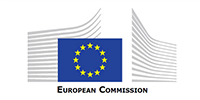
Today the European Commission is taking another step towards safer aviation by releasing an Action Plan implementing the recommendations made in July by the Task-Force led by the European Aviation Safety Agency (EASA) on the accident of Germanwings Flight 9525. Convened at the request of EU Commissioner for Transport Violeta Bulc, the Task-Force had primarily called for better checks on crew members . Today's Action Plan has been developed by EASA and outlines how the agency now intends to implement these recommendations, in collaboration with the Commission.
EU Commissioner for Transport Violeta Bulc said "I am grateful for the comprehensive work carried out by EASA. The safety of European citizens is at the heart of the Commission's transport policy and today's action plan is a valuable contribution. By providing a clear roadmap for EU action, it will help preventing future accidents or incidents."
EASA's Director Patrick Ky added: "The Germanwings tragedy reminded the international aviation community that the medical and psychological conditions of flight crews, if not detected, can lead to a catastrophic outcome. This demonstrates that the regulators have the duty to quickly adapt to a variety of challenges. EASA’s mission is to make air travel ever safer for European Union citizens in Europe and worldwide. With this action plan we are fully committed to fulfil this mission."
EASA intends to use both existing rules and innovative regulatory solutions for the implementation of the recommendations. Concrete actions will be launched in the areas of air operations, aircrew, Information Technology (IT) and data protection. The next steps will be:
- An Aircrew Medical Fitness workshop to be organised in early December 2015. The workshop will gather European and world-wide experts to discuss the implementation of the recommendations. The results of this workshop will be a draft proposal of concrete actions to implement the recommendations, to be further discussed and approved among all the interested parties: European Commission, EASA, airlines, crews, doctors, etc.
- Operational Directives in the area of air operations and aircrew might be published by EASA in the first quarter of 2016 to address specific safety issues and prepare proposals for new rules. Operational Directives are a new regulatory tool which may be used for the first time on this occasion. They will provide operators and national aviation authorities with indications on how to pro-actively implement the recommendations, and what are the actions required.
- New rules such as new acceptable means of compliance (AMC) and guidance material (GM) to existing regulations will be developed as needed before the end of 2016.
Background
Following the crash of Germanwings flight 9525 on 24 March, the French Civil Aviation Safety Investigation Authority (Bureau d'Enquêtes et d'Analyses (BEA)) issued a preliminary investigation report on 6 May 2015.
The same day, Transport Commissioner Violeta Bulc asked the European Aviation Safety Agency (EASA) to set up a task force to look into the findings set out in the BEA report. These areas include the cockpit door locking system and cockpit access and exit procedures, as well as the criteria and procedures applied to the medical monitoring of pilots.
Chaired by Patrick Ky, EASA Executive Director, the Task Force consisted of 12 senior representatives from airlines, flight crew associations, medical advisors and authorities. Additional contributions were provided by invited experts and representative bodies. Last 17 July the report from the Task Force was released, issuing six recommendations.
About European Commission
Transport directly affects everyone in Europe. Whatever age we are, and whatever activities we undertake, transport and mobility play a fundamental role in today’s world. The aim of the Commission is to promote a mobility that is efficient, safe, secure and environmentally friendly and to create the conditions for a competitive industry generating growth and jobs. The issues and challenges connected to this require action at European or even international level; no national government can address them successfully alone. The European Commission’s Directorate-General for Mobility and Transport works in concert with the European Union Member States, European industry, citizens and stakeholders.




Comments
There are no comments yet for this item
Join the discussion